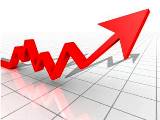Silver investing is a positive aspect of the precious metals market. It makes a good deal of financial sense. Long-term prices for silver will be heavily affected by supply and demand in the future.
Silver Uses
Silver is used in transportation devices, appliances, televisions, computers, film, silver utensils, jewelry, solar power, electronics and medical equipment. This depletes the available silver every year and consumes physical metal.
The known silver stores in 2010 declined to roughly 1.5 billion ounces. Their use in manufacturing and industry is important to watch, for investors in the precious metals market. Once the silver we have on earth has been consumed, it is gone forever.
The Fundamentals of Silver Investing
The demand for silver from all its sources exceeds the levels of excavation. The 2012 silver demand was about 1048 billion ounces. Government sales of silver fell in 2012 to a low not seen in 15 years. The levels of recovered scrap silver also fell. The mining costs rose, and this could cause an increase in the price of silver.
Silver does not see its prices rise in a simple, straight line. Price pullbacks or corrections allow long-term silver investors to see lower prices on average. The global precious metals market allows investors to buy and sell bullion and coins on demand. Investors use dealers with low risk like Monex.com to ensure the quality of the silver they purchase and sell.
The Trading Ratios of Gold and Silver
Silver is actually more plentiful than is gold, but in investment form, it’s scarcer. Any decline in the gold to silver availability ratio will bring about silver prices that are much higher. The higher the ratio of gold to silver, the better the implication is that silver represents a better value than does gold in the precious metals market. Buying physical silver will help investors to fully diversify their other portfolio holdings.
Silver Investing and Global Concerns Economically
Precious metals have inherent and crisis value, since they will always be worth something. Global debt, oil production levels and uncertain economic conditions affect how much interest investors have in silver and other precious metals. Silver prices should rise, based on supply and demand or financial crises worldwide. Precious metals are what many investors turn to in crisis times, as evidenced in the 2008 economic downturn.
The Economy and Silver Investing
If there were an economic crisis, the demand for industrial and manufacturing silver would drop. There would likely be a slowing demand then, from silver consumers. The activity of silver mining would slow down.
For a time, there may be a rising inventory of silver, which might cause some investors to sell their silver on the precious metals market. This would result in volatile silver prices. Of course, the crisis value would stimulate some long-term investors to buy when industrial demand wanes.
Silver isn’t a monetary metal right now. It is important historically, but the metal isn’t used to make currency at the present time. So, although silver is cheaper, the fact that gold is used for money leads some investors to use it as a safer investment opportunity.
Silver Investing in the Long Term
Trading silver could be risky if you don’t have an investment strategy in the long term. In 2013, though, investors who buy valuable metals to store as well as long-term investors increased their purchases in the precious metals market.
Proprietary traders may buy and sell silver and other precious metals when currency prices fluctuate. This hedge fund type of trading activity may support silver prices or suppress them.
A shortage in silver or some government crisis might prompt governments to buy gold or silver from an exchange-traded fund. Owning assets of precious metals like silver in the precious metals market is a better investment strategy.





